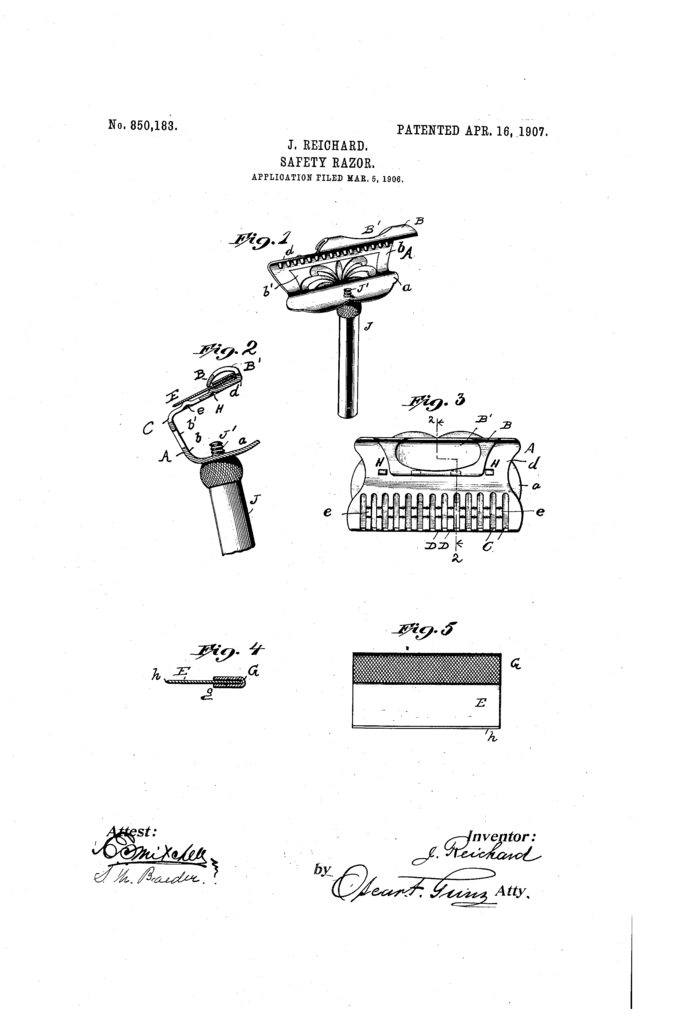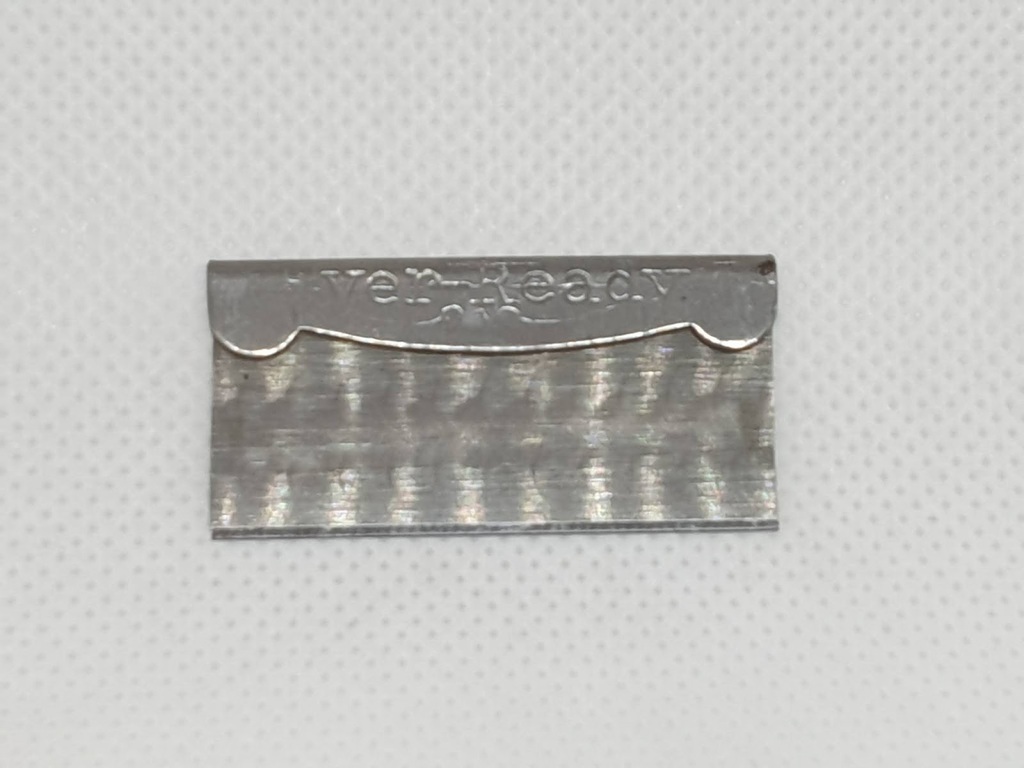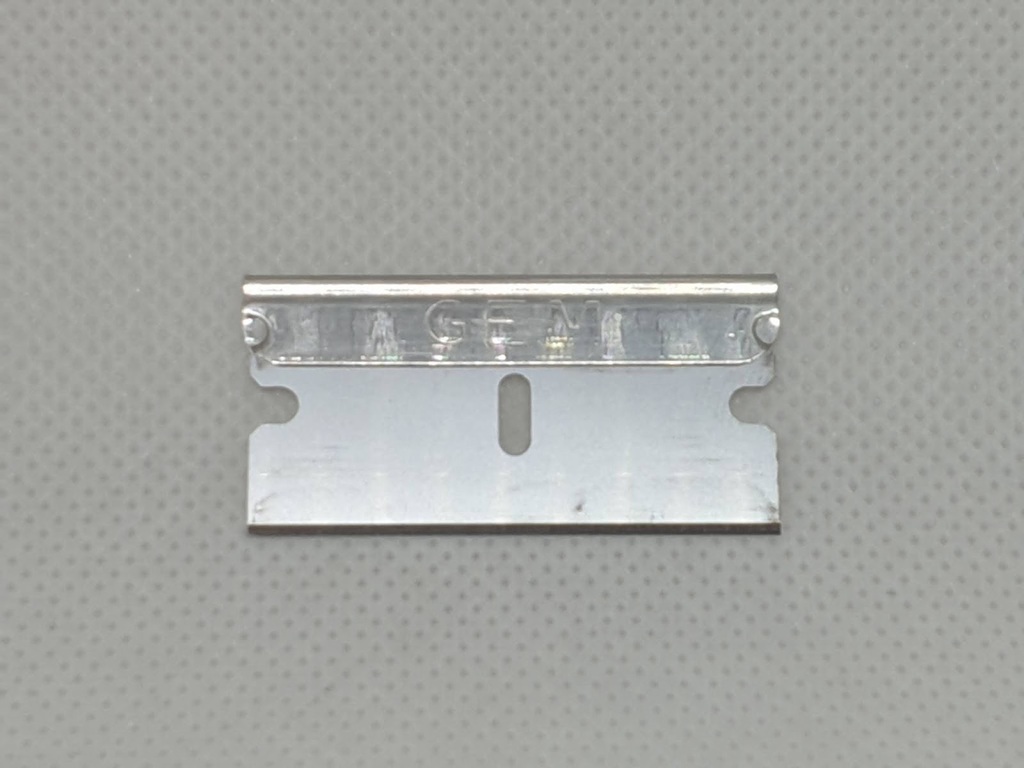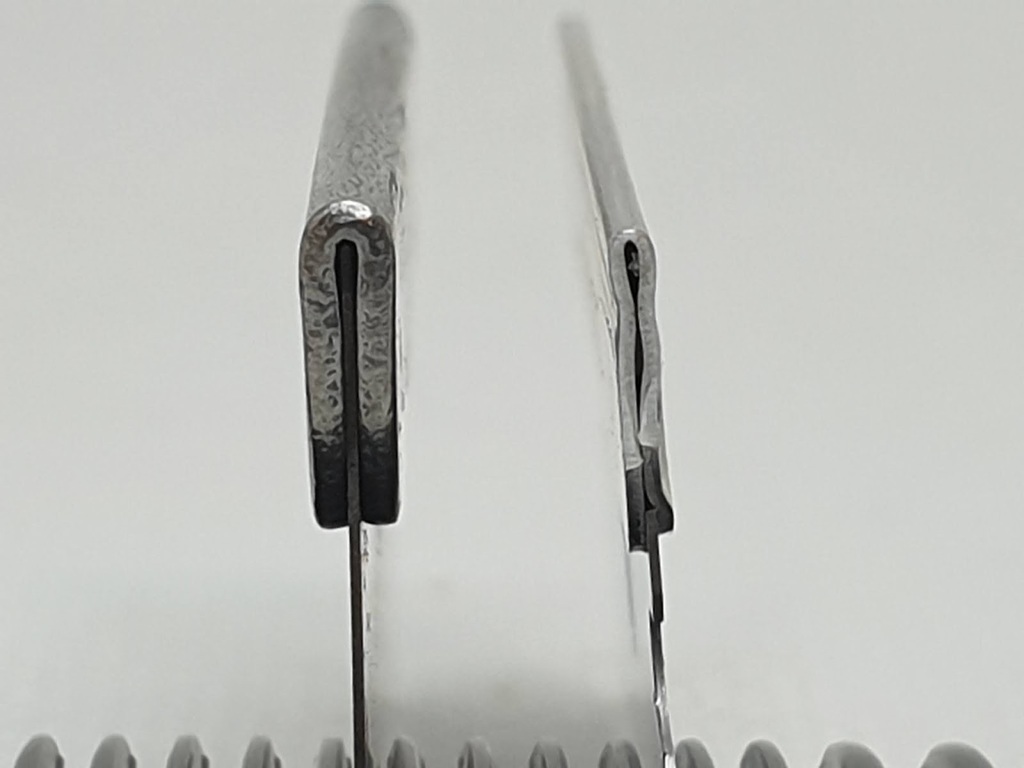Early GEM razors are often called lather catchers. This was because, like the Kampfe Bros’ Star we looked at last week, the head could hold a lot of lather while shaving. American Safety Razor Corp several patents for various designs, and Jeremiah Reichard’s patent filed in 1906 is one of the simpler yet interesting designs.
Simple in that it’s little more than a shaped piece of springy sheet metal, bent to form the head and blade holder. Interesting in that it shows good industrial design – making a single part make several jobs – and in that it’s possible the earliest patent to show what became what we today know as the GEM razor blade.
The object of my invention is to provide a new and improved safety-razor which is simple in construction, strong, and durable, composed of few parts, not apt to get out of order, the blade of which can readily be inserted and removed without manipulating any locking devices, in which razor the blade is held in proper position, and which safety-razor can readily and thoroughly be cleaned in a very convenient manner.
US patent 850,183
Simple in construction we can mark of as done; there is no hinges, seperate springs, rivets, or small fiddly bits.The blade is easy to insert and – presumably – remove; the user would simply slide it under the springy retainer (B), and blade stops (H) would hold it in position. As for easy cleaning; the many slots – forming the guard – and other openings in the head should make it easy to rinse.

The head – while made from a single struck up piece of sheet metal – consists of several parts that performs various functions. There is the bottom (a), which is secured to the handle with a threaded hole. Then there is the front (b), which gives the head height and has a hole1 (b’) in it to make cleaning easier. Following the head further we find the guard (C) consisting of several slots. Each tooth in the guard have a bump (e), which lifts the blade a little up, creating the blade gap. A little further back we have two blade stops (H), which acts on the shoulder of the ribbed blade. Lastly we find the bent up piece of the head that acts as a loop shaped2 spring (B) to hold the blade in place.
Thus by simply inserting the blade lengthwise between the top of the casing and the holding or clamping spring B it is brought into and held in its proper position without requiring the use or manipulation of any locking device, such as a separate spring, a screw, or similar device.
US patent 850,183
It’s important to realise that this head design won’t work with the blades from earlier lather catchers, be it a wedge blade3 or the flat rib-less blade American Safety Razor Company had specified in earlier4 filed patents. The blade stops simply wouldn’t have anything to push against on those earlier blades. As specified in the patent text and drawings, the blade looks and sounds very much like the early GEM blades.
The blade E consists of a thin strip of sheet-steel, one edge of which is sharpened, as at h, to form the cutting edge, and the opposite edge or rear edge of the blade is embraced by a substantially U-shaped metal strip G, which forms a stiffener and back for the blade and is of such dimensions that when the blade is inserted between the top of the casing and the loop-shaped holding-spring B the closed outer edge of this strip G rests against the inner surface of the loop-shaped spring at its bend, and the shoulder g, formed by the bottom front edge of said strip, rests against the projections H on the upper surface of the top of the casing.
US patent 850,183
Note that there is no cutouts along the sides to align with stops, nor a central cutoff to align with a guide. Those were features that came with the new blade, which – as discussed before – was patented in 1929
If the simple design of the head and the birth of the GEM blade wasn’t enough, this patent can be argued to show an early precursor to the injector style razor as well. This is due to the blade being inserted from the side of the razor, instead of from the top or back as in other lather catcher style razors. To quote the patent text again:
…the blade is inserted by pushing it lengthwise between the upper surface of the top of the casing and the loop-shaped holding-spring B it is guided into its proper place in the holder and is also held securely in place, as the free edge of the loop-shaped spring B bears down on the upper surface of the blade, and the projections H prevent the blade from moving toward the front of the casing or the guard.
US patent 850,183
For someone with access to the right tools – primarily a stamping press – and the knowledge how to make dies for bending spring steel, it should be easy to replicate or recreate Jeremiah Reichard’s lather catcher razor for the modern GEM blade.
I can see a couple of changes to make it more appealing to the modern shaver though… For starters; instead of having a threaded hole in the head, secure a small bolt there instead. This would allow the use of other handles, of the same design that are used on double edge razors. The height of the head could also be reduced by shortening the front. While this will make the razor less useful to catch lather, it will look more like a modern razor do.
The full patent can be found at Google Patents and at Razors.click.
1) According to the patent text, this hole should preferably be of an ornamental configuration
2) The loop shaped spring have a cut out (B’), which both lightens the head and decreases the tension on the blade.
3) Used on many early razors, for instance the Star.
4) See for instance US patent 866,856 – which was filed about a year before this one.



